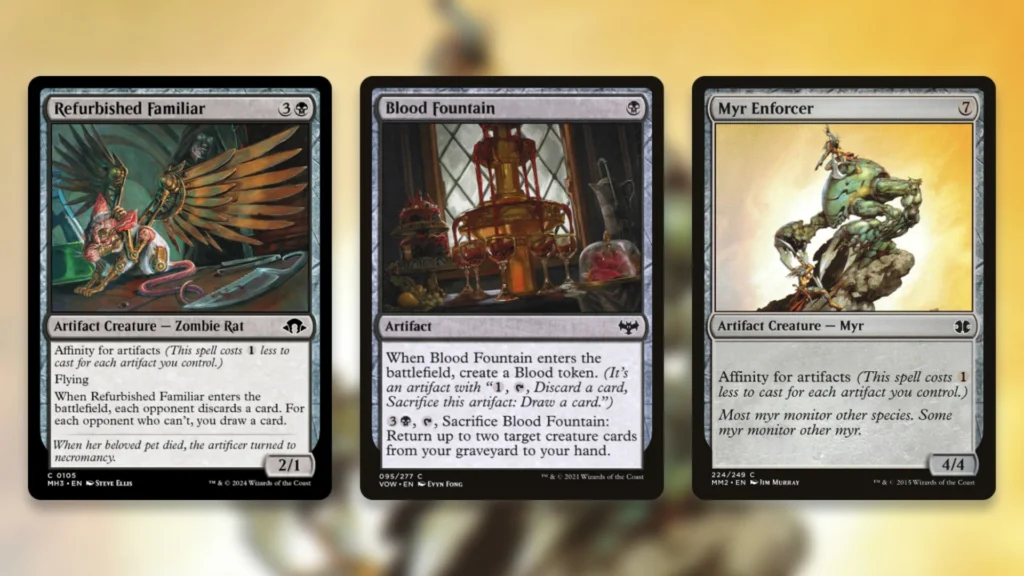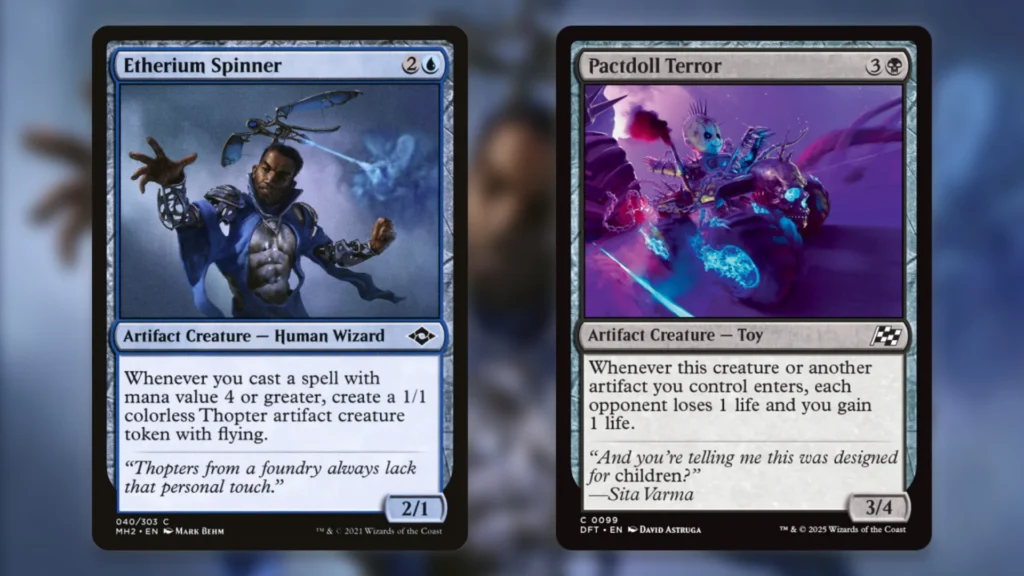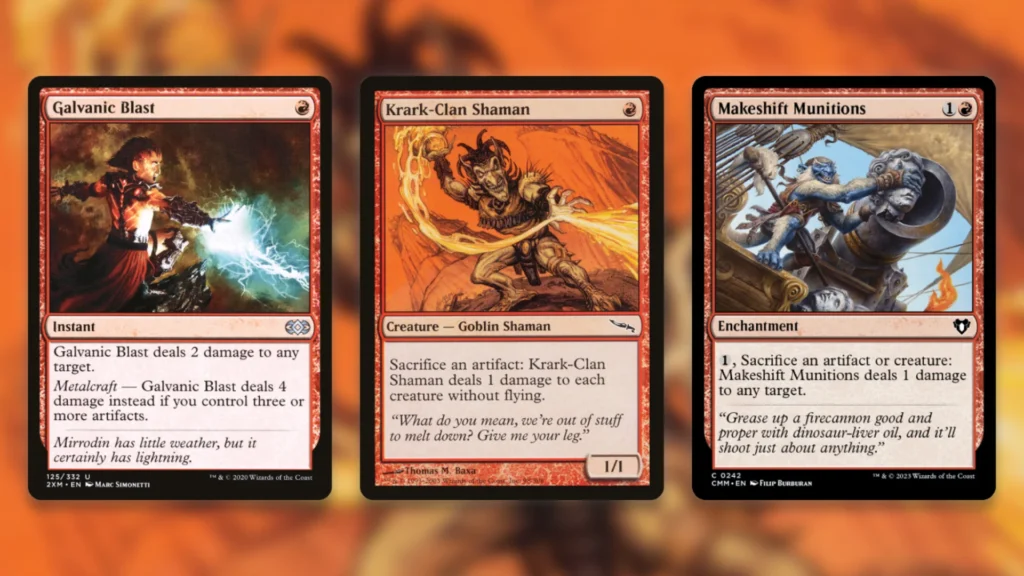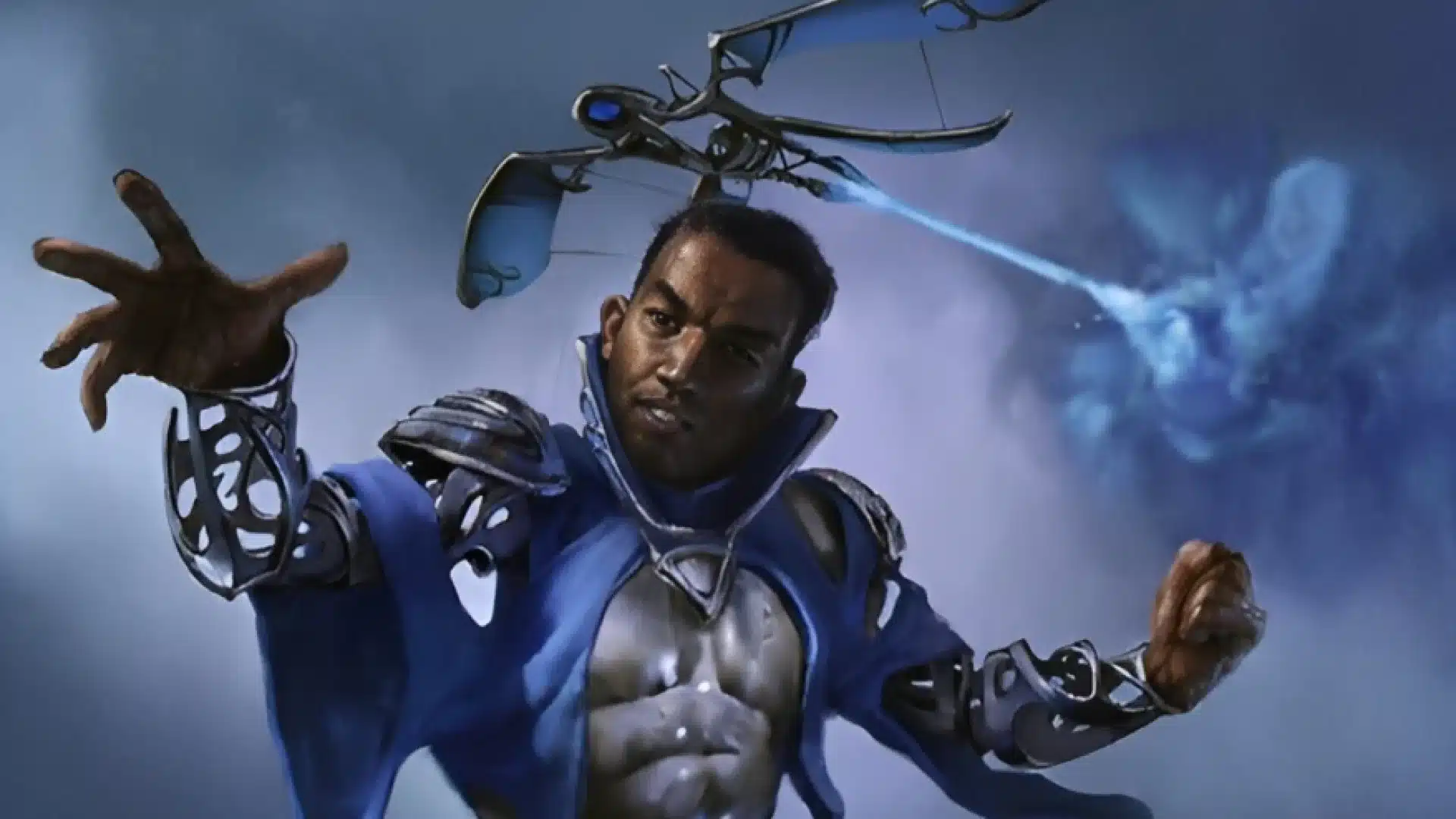For Magic: The Gathering’s many Pauper players, Affinity decks are pretty much a fact of life. Since the Mirrodin artifact lands were never banned in the format, decks built around the mechanic have been present for its entire lifespan. While you’d expect cards good enough to warrant bans in Modern to dominate the likes of Pauper, the deck actually has a fairly healthy meta share for the most part. That said, the new Dimir version of Affinity we saw make its MTG Pauper debut earlier this week could change all that.
This deck pairs Affinity’s usual high-tempo playstyle with a potent combo finish. With this addition, the deck has the power to close games no matter how long they run. Pauper is a hostile format right now, ruled by hyper-efficient Burn decks and Ramp lists. A deck like this, which attacks the meta from a new angle, has the chance to become a breakout success.
Dimir Affinity In MTG Pauper

The Dimir Affinity deck we’ll be looking at today comes via unsur3, who piloted it to a 5-0 finish in Sunday’s MTG Online Pauper League. At a baseline, it shares a lot with the Grixis Affinity lists you tend to see in the format. The core game plan here is to drop creatures for very little mana thanks to Affinity. We’re talking Frogmite, Refurbished Familiar, and Myr Enforcer.
These cards all start overpriced, but it’s trivial to bring those costs down. 16 of the 18 lands in this deck are artifact lands, which essentially count as two mana towards any of these creatures. On top of that, the deck runs a number of ways to get artifacts onto the board for a low cost. Blood Fountain is the best of these, being a one-mana artifact that generates another artifact on entry. Assuming you cast it via a Vault of Whispers on turn one, that’s three artifacts in play right away.
Additionally, the deck also runs Springleaf Drum and Ichor Wellspring. Both are cheap artifacts that fuel your Affinity plays early. Drum, in particular, is a great way to get your momentum going. By tapping down the first Affinity creature you drop, it can often power out another. It can even fix your mana if that creature happens to be a Refurbished Familiar.
Wellspring also offers you momentum, albeit in terms of card advantage rather than mana advantage. It cantrips on entry, then again once it hits the graveyard. You can ensure the second draw by sacrificing Wellspring to Fanatical Offering, which puts you even more cards ahead and keeps your artifact total constant by providing a Map token.
Wombo Combo

This is all classic Affinity stuff. What sets unsur3’s Dimir Affinity brew apart from its MTG Pauper peers is its combo functionality. The deck runs full playsets of both Etherium Spinner and Pactdoll Terror, which come together to put some serious pressure on your opponent.
Etherium Spinner is the heart of the combo here. It creates a 1/1 Thopter token whenever you cast a spell with mana value four or greater. Much like Up the Beanstalk, it doesn’t care about the mana actually spent on the spell, just its original cost. This means all of your Affinity creatures will trigger it, even if you played them for free.
On its own this is a powerful interaction, and a great way to build a wide board. Throw in Pactdoll Terror, however, and you have a very real chance of draining your opponent out. Terror is pretty good in Affinity lists anyway, being an artifact itself that chips away at your opponent each time any artifact, lands included, enters under your control. With Spinner throwing out free Thopters on the regular, suddenly all of your Affinity creatures are draining your opponent for two on entry.
Add in Thoughtcast, which also triggers Spinner, and you have very real potential for game-ending turns where you tear through your deck and drain a ton of life from your opponent. Fanatical Offering can help keep the train going on your combo turn too. The fact that both combo pieces are artifact creatures makes this even better, as it gives you a solid Affinity baseline to work from.
Throw in Metallic Rebuke for cheap protection, and that’s the deck. While its core is very similar to that of Grixis Affinity, the potential for explosive wins here is much, much higher.
A Successful Mutation?

Based on its initial League results, unsur3’s Dimir Affinity is well-suited to the MTG Pauper metagame at present. The real question right now is whether moving into Dimir over the classic Grixis build is the correct choice.
By cutting red, the deck loses access to a number of key cards. Most crucial among these is Krark-Clan Shaman. This is one of the format-defining Pauper cards, seeing play not just in Affinity but in Jund Wildfire, Tron, Synthesizer and more. It lets any deck with a good number of artifacts seize control of the board in an instant, which is a handy tool to have against all the speedy red decks in the format right now.
The deck also loses out on Galvanic Blast and Makeshift Munitions. Blast is essentially better Lightning Bolt 90% of the time in Affinity, so losing that does sting. It’s a great way to take out opposing Myr Enforcers, or to push for lethal in tight games. Munitions is less exciting, generally only included as a one-of for grindy matchups, but it’s still a notable loss from the Grixis version.
What these losses ultimately represent is a big reduction in interaction for the deck. Outside of Metallic Rebuke, Dimir Affinity has no real way to disrupt the opponent or remove their threats. It’s laser-focused on executing its own tempo/combo gameplan, to the detriment of more balanced play.
Whether this approach pays off or not will depend on the shifting tides of the Pauper meta. Against linear decks with few answers of their own, like High Tide, it’ll shine, but in matchups where your combo pieces get removed, your cards won’t go as far as the deck’s Grixis variant.
Stick with us here at mtgrocks.com: the best site for Magic: The Gathering coverage!

